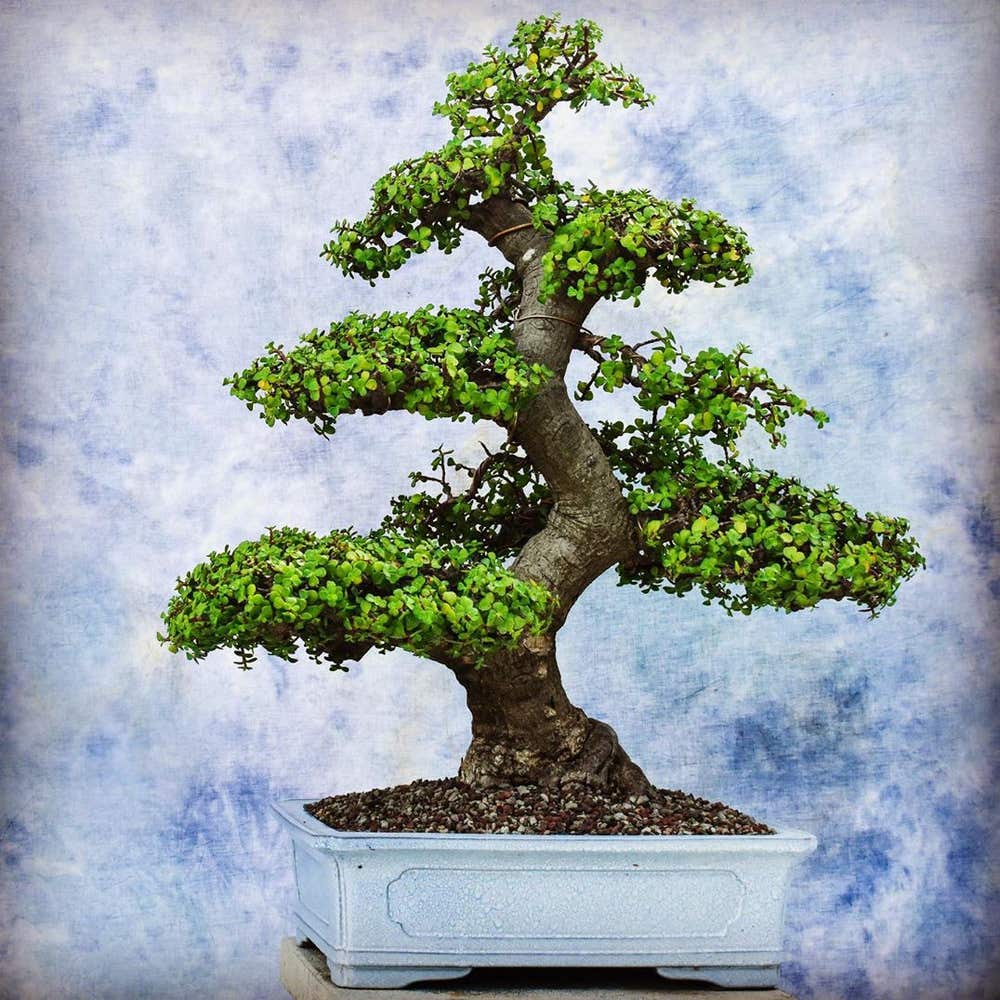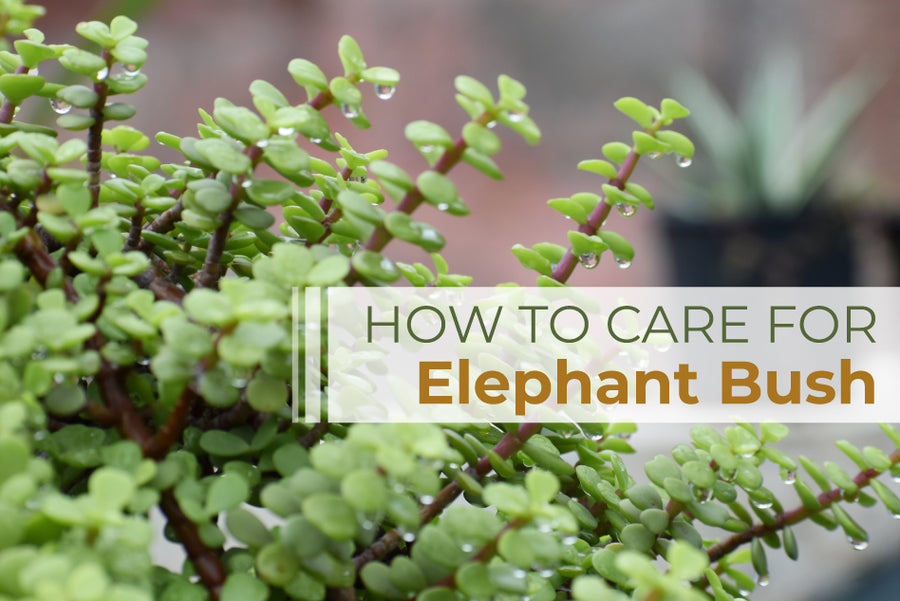Elephant Bush Bonsai trees require well-draining soil and bright, indirect sunlight. Water sparingly to avoid root rot.
The Elephant Bush, also known as Portulacaria afra, is a popular bonsai tree choice for beginners and experts alike. Native to South Africa, this succulent is known for its small, fleshy leaves and striking appearance. It thrives in well-draining soil and prefers bright, indirect sunlight, making it an ideal indoor plant.
Its ability to store water in its leaves allows it to endure dry periods, making care relatively straightforward. Regular pruning helps maintain its shape and encourages dense foliage. With proper care, the Elephant Bush Bonsai can be a stunning and low-maintenance addition to any indoor garden.

Credit: greg.app
Introduction To Elephant Bush Bonsai
Elephant Bush is a popular bonsai tree. It is easy to care for. The leaves are small and round. They store water. This makes the plant drought-resistant. The plant prefers bright light. It can grow indoors and outdoors. This bonsai tree is perfect for beginners.
Elephant Bush bonsai offers many benefits. It purifies the air. It is also very low-maintenance. The plant can reduce stress. It adds beauty to any room. The plant is also good for your mental health. It is easy to shape and prune. This makes it fun to grow.
Choosing The Right Plant
Pick a plant with bright, green leaves. Avoid plants with yellow or brown leaves. These colors can mean the plant is not healthy. Look for firm stems. Soft stems can mean the plant has too much water. A healthy plant should look strong and fresh.
| Type | Features |
|---|---|
| Portulacaria Afra | Small leaves, good for bonsai. |
| Variegated Elephant Bush | Green and white leaves, unique look. |
Potting And Soil Requirements
The best soil mix must drain well. Use a mix of cactus soil and pumice. This prevents waterlogging. Roots need oxygen to stay healthy. Good soil mix provides this. Avoid heavy clay soils. These retain too much water. Sand helps with drainage.
The pot must have drainage holes. This prevents root rot. Shallow pots work best. They allow the roots to spread. Use a pot that is slightly larger than the root ball. This gives roots room to grow. Choose a ceramic or clay pot. These materials help regulate moisture.
Watering Practices
Proper watering practices are essential for Elephant Bush Bonsai Tree care. Ensure soil is slightly dry between waterings to prevent root rot. Consistent moisture levels support healthy growth and vibrant foliage.
Watering Frequency
Watering the Elephant Bush Bonsai is easy. Water the plant when the soil is dry. Check the soil with your finger. If it’s dry, then water it. Overwatering can harm the plant. Dry soil is a sign that it needs water. Use a pot with drainage holes. This helps prevent overwatering. Always use room temperature water.
Signs Of Overwatering
Overwatering is harmful to the Elephant Bush Bonsai. Yellow leaves are a common sign. The leaves may also fall off. The soil will feel soggy. Check the roots for rot. Rotting roots are a bad sign. Ensure the pot has drainage holes. This prevents water from sitting in the pot. Always let the soil dry out between waterings.
Lighting Needs
Elephant Bush Bonsai thrives in bright, indirect sunlight. Ensure it receives at least 4-6 hours of light daily. Proper lighting prevents leggy growth and maintains vibrant foliage.
Ideal Light Conditions
The Elephant Bush Bonsai loves bright light. It grows best in full sun. Place it near a south-facing window for the most light. The plant can also do well in partial sunlight. This means morning sun and afternoon shade. Avoid dark and shady places for this plant.
Artificial Lighting Options
If your home lacks natural light, use grow lights. LED grow lights are a good choice. Place the light close to the plant. Make sure the light is on for 12-14 hours a day. This will help the plant stay healthy. Check the light’s strength; it should mimic sunlight.

Credit: m.youtube.com
Pruning And Shaping
Pruning and shaping Elephant Bush bonsai promotes a dense and attractive appearance. Regular trimming ensures the tree maintains its desired form and health.
Pruning Techniques
Pruning helps keep the bonsai tree small and healthy. Use sharp scissors for clean cuts. Remove dead or damaged branches first. Trim new growth to maintain the desired shape. Make cuts above a leaf node to encourage new growth. Avoid cutting too much at once. Prune regularly to shape the tree over time.
Wiring Methods
Wiring helps shape the bonsai tree. Use soft aluminum or copper wire. Wrap the wire around branches gently. Bend the branches slowly to avoid breaking them. Check the wire often to ensure it does not cut into the bark. Remove the wire after a few months. Shape the branches gradually over time.
Fertilization Tips
Proper fertilization ensures healthy growth for your Elephant Bush Bonsai Tree. Use a balanced, water-soluble fertilizer monthly during the growing season. Reduce feeding during the dormant winter months to avoid over-fertilization.
Best Fertilizers
The best fertilizers for Elephant Bush Bonsai are balanced and slow-release. Use a balanced 10-10-10 fertilizer for optimal growth. Avoid high-nitrogen fertilizers as they can harm the plant. Organic fertilizers like compost tea are also beneficial. Liquid fertilizers should be diluted to half-strength. Granular fertilizers can be used but should be applied sparingly.
Fertilization Schedule
Fertilize your Elephant Bush Bonsai every four weeks during the growing season. Reduce the frequency to once every two months during the dormant period. Always water the plant well before applying any fertilizer. This prevents root burn and ensures nutrients are absorbed efficiently. Avoid fertilizing during extreme heat or cold. Consistent fertilization helps maintain a healthy bonsai tree.
Common Problems And Solutions
Elephant Bush Bonsai trees can attract pests. Aphids and spider mites are common. Use a mild soap solution to wash the leaves. Spray the solution on all affected areas. Repeat this process every week until pests are gone. Neem oil also helps. It is a natural pesticide. Apply it carefully on the leaves and stems. Always check your tree for pests regularly. Healthy trees resist pests better. Keep your bonsai clean and well-watered.
Diseases can harm your Elephant Bush Bonsai. Root rot is a serious issue. It happens due to overwatering. Ensure proper drainage in the pot. Use well-draining soil. Remove dead leaves and stems to prevent fungal growth. Leaf spot is another problem. It shows as dark spots on leaves. Remove affected leaves immediately. A healthy environment keeps diseases at bay. Ensure good air circulation around your bonsai. Avoid overcrowding with other plants.
Seasonal Care
Keep the Elephant Bush bonsai indoors during winter. Place it near a window with bright light. Water the plant less often to avoid root rot. Ensure the room temperature stays above 50°F. Avoid cold drafts and sudden temperature changes.
Move the Elephant Bush bonsai outdoors during summer. Select a spot with partial shade. Water the plant more frequently, but let the soil dry between waterings. Protect the bonsai from intense afternoon sun. Check for pests like aphids and spider mites regularly.

Credit: succulentsbox.com
Propagation Methods
Propagating an Elephant Bush Bonsai Tree involves using stem cuttings placed in well-draining soil. Ensure consistent moisture and adequate sunlight for successful rooting.
Cutting Propagation
Cut a healthy stem from the plant. Ensure the cutting is 4-5 inches long. Remove the lower leaves to expose the stem. Place the cutting in water or moist soil. Keep the soil lightly moist. Roots will form in 2-3 weeks. Transplant the new plant to a pot.
Seed Propagation
Collect seeds from a mature plant. Plant the seeds in a seed tray with moist soil. Cover the seeds lightly with soil. Keep the tray in a warm, sunny spot. Water the soil regularly to keep it moist. Germination will occur in 2-3 weeks. Transplant the seedlings to individual pots.
Conclusion
Caring for an Elephant Bush Bonsai is rewarding. With proper watering, sunlight, and pruning, your bonsai will thrive. Remember to monitor soil moisture and provide adequate drainage. Regular attention ensures a healthy and vibrant bonsai. Enjoy the beauty and tranquility that this unique plant brings to your space.
Happy gardening!

